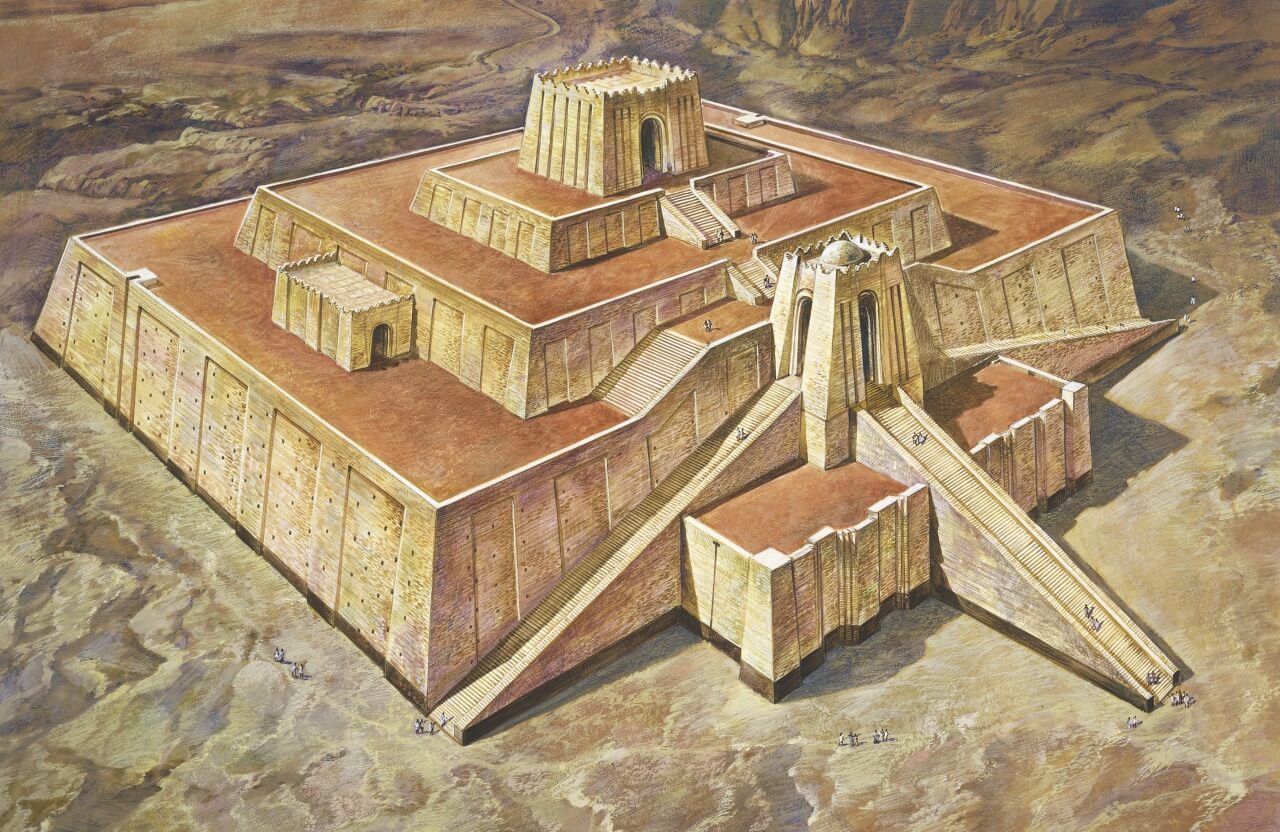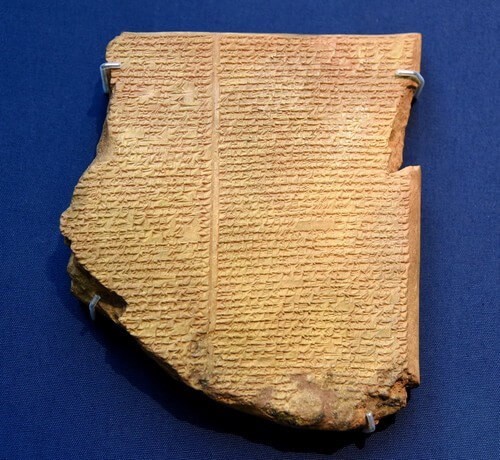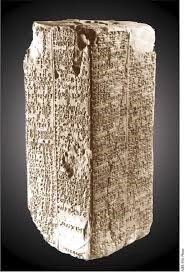By The Human Origin Project

The Sumerians were the first civilization of Ancient Mesopotamia.
The first civilization on earth is a pivotal piece in the human origin story. Who were the first people to inspire humans all over the planet to start living in cities?
When searching for the oldest civilization, defining which ancient societies qualify is a challenge. Firstly, they need to leave traces that we can find and analyze. There has to be evidence of how these ancient people rose to what would be modern society.
Of all ancient societies, the Mesopotamian people of Sumer provide a compelling case as the first civilization on earth.
A case for the first civilization
It?s around six thousand years ago that ancient Sumer first appears. Today there are older records of human societies. However, the argument for Sumer is based on the in-depth records of their society.
To trace the birthplace of civilization we need to identify the traits of civilized society.
Sumer?s case can be argued upon:
- Location ? established between the Tigris and Euphrates rivers in the ancient region of Mesopotamia. Sumer qualifies according to many written records as the birthplace of modern society.
- Agriculture ? in the fertile crescent, the first signs of crop growing and animal husbandry appear.
- Written language ? is almost as important as spoken word. Every civilization on the planet has their own adaptation of writing, which is a crucial aspect of teaching, learning, sharing ideas, as well as keeping historical records.
Today there are still surviving records from Sumeria. These include the first schools, the story of Noah and the great flood, the first signs time measurement, minute and hour time and government.
Without writing, much of what we know about the world would be lost. Over five thousand years ago, ancient Sumeria ? the oldest civilization on earth ? leaves some of the oldest records on the planet.
Who were the Sumerians?
Sumer was located in modern day Iraq and Kuwait. It was the southernmost region of ancient Mesopotamia, which was once the largest and most populated region on earth.
The earliest records of Sumeria provide a murky picture of their origin.
In a period between 6500BC and 3800BC, the first inhabitants of what would eventually become Sumer are known as the Ubaid people. Evidence shows that the Ubaid were farmers and had many settlements that were stable and prosperous.
New evidence suggests these isolated farming communities started between the Caspian Sea, the Hindu Kush, and Kopet Mountains in Turkmenistan.
The migration to Sumer initially may have begun due to a persistent drought, that eventually forced them to abandon their home. Whatever the cause, they migrated and settled in the fertile southern lands of modern day Iraq.
The cities of Sumer are established
By 4000bc the people known as the Sumerians were in control of the region. Sumer itself was made up of groups of walled city-states, with small villages built around them.
Each of these cities usually followed the same basic layout, with a walled metropolis containing a Ziggurat at the center. Uruk, thought to be the first city, was one of many that made up Sumer, including Nippur, Ur, Kish, and Lagash.
As many as twelve of these cities were in existence by 3000bc, some were large enough to house 80,000 or more people. To date, there are eighteen excavated Sumerian cities in total. They are all concentrated on and around the branches and canals of the Euphrates River.
Sumer was a continuous civilization for a few thousand years until about 2000BC. Around this time, it was invaded and eventually absorbed into other Mesopotamian civilizations. Until this point, it was a distinct and separate nation.
One of the most fascinating points is that it first appeared with language, technology, and writing systems in full-form.
Although we now know much about the first civilization on earth, there are many puzzling aspects about Sumer we may never fully appreciate. It is thanks to these people that written language exists and is used all over the planet.
3 periods of the Sumerian civilization
- Ubaid period: 6500?4100 BC
- Uruk period: 4100?2900 BC
- Early Dynastic period: 2900?2334BC
5 major cities of ancient Sumer
Records and archaeological evidence have found descriptions of Sumerian cities. The major ones and their modern localities are:
- Uruk (Warka) ? an ancient city of Sumer(and later of Babylonia), situated east of the present bed of the Euphrates river. 30 km east of modern Samawah, Al-Muthann?, Iraq.
- Kish (Tell Uheimir and Ingharra) ? considered to have been located near the modern Tell al-Uhaymirin the Babil Governorate of Iraq, 80 km south of Baghdad.
- Ur (Tell al-Muqayyar) ? located at the site of modern Tell el-Muqayyar. Ur was once a coastal city near the mouth of the Euphrates on the Persian Gulf. The coastline has shifted, and the city is now well inland, on the south bank of the Euphrates, 16 kilometers (9.9 miles) from Nasiriyah in modern-day Iraq
- Nippur (Afak) ? Nippur was located in modern Nuffar in Afak, Al-Q?disiyyah Governorate, Iraq. It is among the most ancient of Sumerian
- Lagash (Tell al-Hiba) ? located northwest of the junction of the Euphratesand Tigris rivers and east of It is about 22 kilometers (14 mi) east of the modern town of Ash Shatrah, Iraq. Lagash (modern Al-Hiba) was one of the oldest cities of the Ancient Near East.
What did the Sumerians Contribute?
The Sumerians provide the world?s first evidence of civilized cultural practices.
These include:
- Pottery
- Animal agriculture
- Architecture and buildings
- Carpentry
- Weaving
- Fermentation and beer making
- Mathematics
- Astronomy
With clay being in abundant supply, Sumerian pottery is one of the first to be found in the archaeological record.
The Sumerians also had many ornaments, made clay pots, and built stone images. The Ziggurat was the name for the Sumerian temple.
The clay tablets & Cuneiform writing

A remnant of a clay Cuneiform tablet records the first civilization on earth. Source
The writing system used by the Sumerians is known as Cuneiform. This means ?wedge-shaped? in Latin and is a system of writing made up of vertical and horizontal lines etched into clay.
The first appearance of this written language in the archaeological record is dated to somewhere around 3500BC. They were first deciphered in the 19th century. The dating of the clay tablets is subject to contention with some arguing the origins run much deeper into history.
What seems to have been developed primarily for trade purposes in Sumer, quickly spread throughout the world. Initially, Sumer?s written language appears to have been used for mundane tasks such as stocktaking and trade information.
Despite the most detailed recorded events, critical historical periods may be lost to history. In the early period of Sumerian civilization, there was no written language to make records and note historical events.
What religion did the Sumerians practice?
Sumerian religion provides interesting parallels to modern beliefs.
After Cuneiform was invented and in use throughout Mesopotamia, the Sumerians began writing down accounts and keeping lists of their kings and rulers. Some of the themes still resonate through religious texts today.
Only translated very recently, it was only a few hundred years ago that we deciphered the oldest stories of Sumer. These translations marked a key step in the understanding of civilized human history.
As more clay tablets were translated, it became clear that it was the Sumerians who were responsible for first writing them. Many stories in The Bible were thought to not only be the oldest, but also the first written stories until Cuneiform was deciphered.
The most famous of these is ?The Epic of Gilgamesh? which is the earliest known version of the Biblical flood story. ?The Enuma Elish? draws similarities to the Garden of Eden story in The Bible. Some historians claim it was inspired by the Sumerian account.
There is also the first documented story of a God dying and coming back from the dead in the Sumerian poem ?The Descent of Innana?. It draws parallels to the gospels of The New Testament.
The Sumerian King?s list tablet

The Oldest Civilization in the World, Sumeria?s Kings List.
Of all the Sumerian Artifacts that have been recovered from sites in Iraq, the most intriguing is the Sumerian King List.
It is a rectangular block that consists of several fragments of cuneiform-etched, clay tablets. They describe the lineage of human monarchs as well as more mysterious leaders.
Historians have confirmed some of the leaders on the list, with a mysterious chronology yet to be explained. These earlier Kings are recorded to have had remarkably long reigns.
The list begins about 266,000 years ago, at a time when ?Kingship first descended from heaven? in the ancient Sumerian city of Eridu in southeastern Iraq. Eridu is said to have marked the beginning of the Sumerian civilization around 5400 BCE and lasted until around 600 BCE.
From there, rulers are named up until the end of the Isin dynasty, about 1827?1817 BCE. The list is split into a few different segments and accounts of a great flood similar to the biblical deluge.
There are five cities written about that exercised pre-dynastic kingship ?before the flood.?
Archaeologists are yet to verify the existence and whereabouts of each.
- Eridu(Tell Abu Shahrain)
- Bad-tibira(probably Tell al-Madain)
- Larsa(Tell as-Senkereh)
- Sippar(Tell Abu Habbah)
- Shuruppak(Tell Fara)
Sumerian ancient astronomy

A clay disc with an ancient Sumerian star map.
Sumerian records provide a glimpse of ancient astronomy capabilities. Today most records of their knowledge are lost, leaving a few tantalizing fragments of understanding of the universe.
When compared to later Babylonian astronomy standards, they appear quite basic. Babylonian clay tablets that have survived since the dawn of Mesopotamian civilization record the earliest total solar eclipse seen in Ugarit on May 3, 1375 BC.
Most understanding of their contribution to ancient astronomy is by indirect transmission to the Babylonian culture. Early Babylonian records use Sumerian names for stars, suggesting that a body of knowledge was passed down.

A Sumerian seal showing the sun at the center of 11 celestial bodies.
The Sumerians seemed to be aware that the solar system was Heliocentric. On some tablets, 11 celestial bodies or planets can be found. The above picture taken from a Sumerian cylinder seal. It suggests that they knew the number of bodies in the solar system as well as the relative size of each.
The planets may represent nine planets and two moons. However, it?s unclear if they knew precisely the bodies rotating the sun.
There is a twelfth body shown away from the solar system.
Today scientists are in the process of detecting a body that may be in a wider orbit than the solar systems outer planets.
Conclusion:
Ancient Sumer was the foundation of ancient Mesopotamia. Today the remnants of Sumerian culture resonate through farming, writing, and religious practices.
As the oldest civilization, until there is further records of pre-Sumerian cultures, Sumer leads as the candidate for the foundation of modern society.
Now it?s up to you. What do you think is most remarkable about Sumer?s contribution to our society?
Were they the first civilization?
References:
- https://file.scirp.org/Html/24588.html
- https://www.ancient.eu/sumer/
- https://www.history.com/topics/ancient-middle-east/sumer
- https://www.nature.com/articles/154309a0


